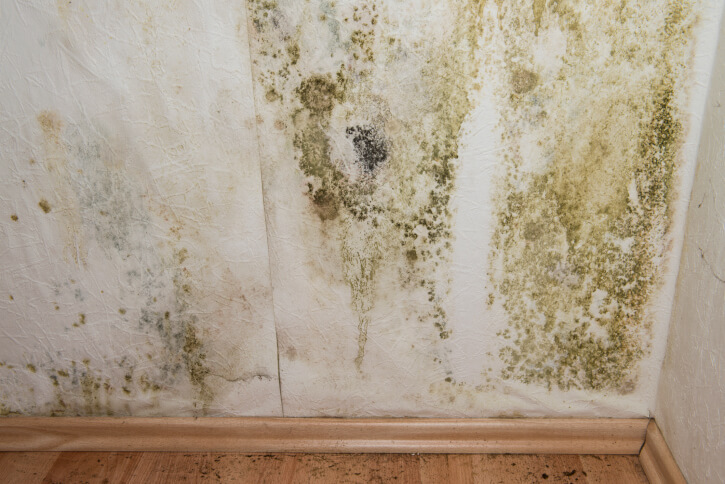
Can You Paint Over Mildew?
Can you paint over mildew? In a word, no.
Mildew is commonly used to describe mold and the discoloration it causes as it eats through porous painted surfaces. Mildew can show up in patches of green, brown, or black, and it can appear fuzzy, slimy, or even powdery. As mildew eats through the painted surface, it destroys the integrity of the paint film, allowing moisture to enter. In a worst case scenario, this will cause wood to rot or masonry to crumble.
In some cases, mildew can be difficult to discern from simple dirt. The easiest way to test a surface is to place a drop of common household bleach (5% sodium hypochlorite) on the suspect area. If the stain is mildew, it will bleach out in just two minutes or so. Dirt will remain unaffected.
Painting over mildew is only a temporary fix to an ongoing problem. The mold will continue to live and spread beneath the paint, and the mildew will eventually just bleed through. Some paints are formulated with mildew inhibitors (such as biocide barium metaborate), but these simply inhibit the growth of new mildew. They do nothing to destroy the existing mold.
Your best bet is to destroy the mold at the source, rather than simply painting over it. The Paint Quality Institute recommends a disinfecting solution of one quart bleach to three quarts water. Since bleach tends to become less effective over time, you should use fresh bleach in your solution.
Warning: Do not add household cleaner or any other product with ammonia to the solution. Mixing chlorine bleach with ammonia will release toxic gases.
Bleach can burn the eyes and skin, so be sure to wear eye protection and rubber gloves when you’re applying the solution. Use a sponge or garden sprayer to cover the mildewed area, and let it stand for 30 minutes before rinsing with plain water.
If the mildew is on a plastic, aluminum, or chipped enamel surface, you’ll want to test the solution on a small area first. Chlorine bleach might cause damage to these surfaces.
Once the mildew is gone, you can paint the area. To prevent a recurrence, you may want to select paint with a mildew inhibitor. Paint mixed with zinc oxide is more resistant to mildew than paint with titanium dioxide. On the other hand, paint made with linseed oil is highly susceptible to mildew. Lower grade paints are as well, since they are extended with thickeners that can actually feed mold.
So don’t paint over that mildew. Get rid of it, and use a mildew-resistant paint to ensure it doesn’t come back.